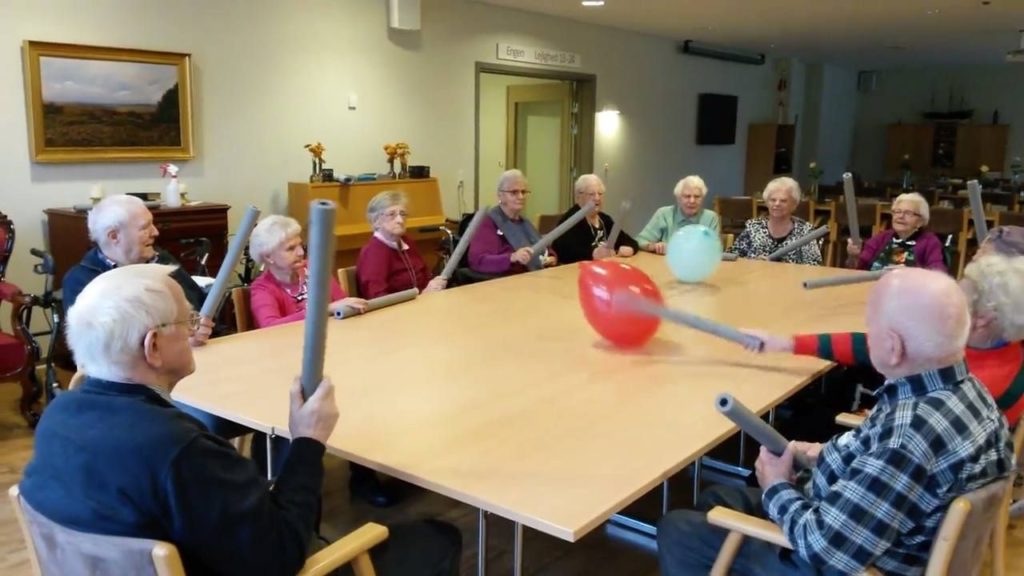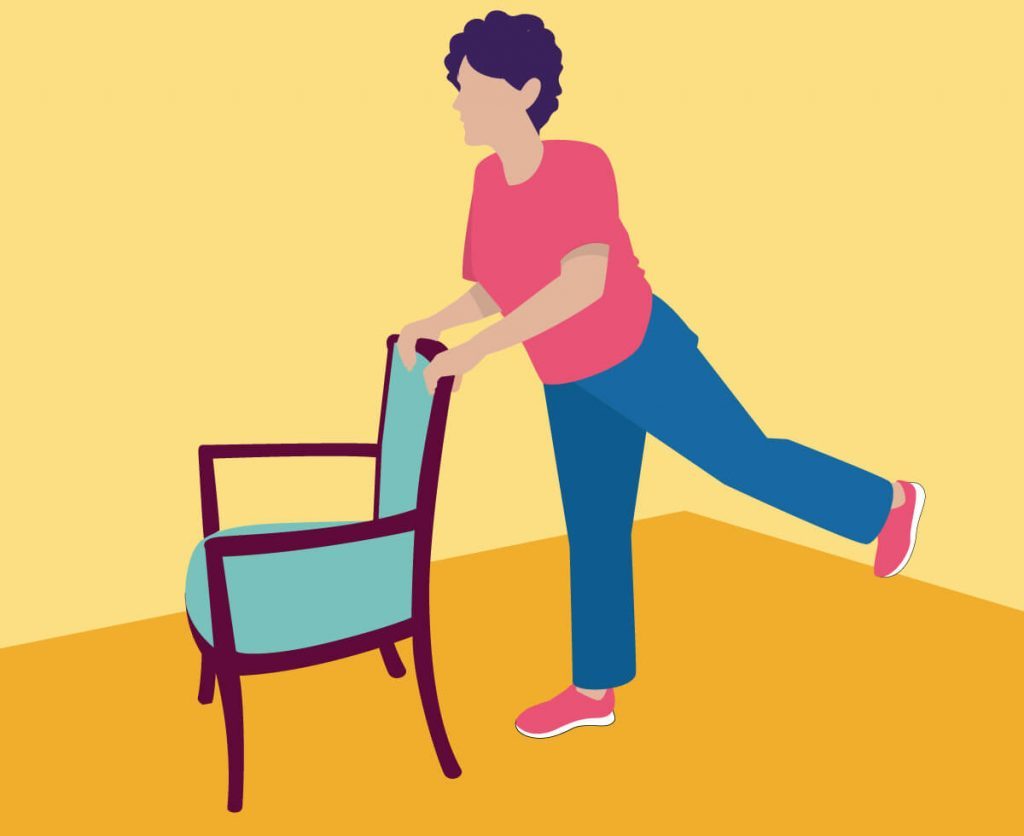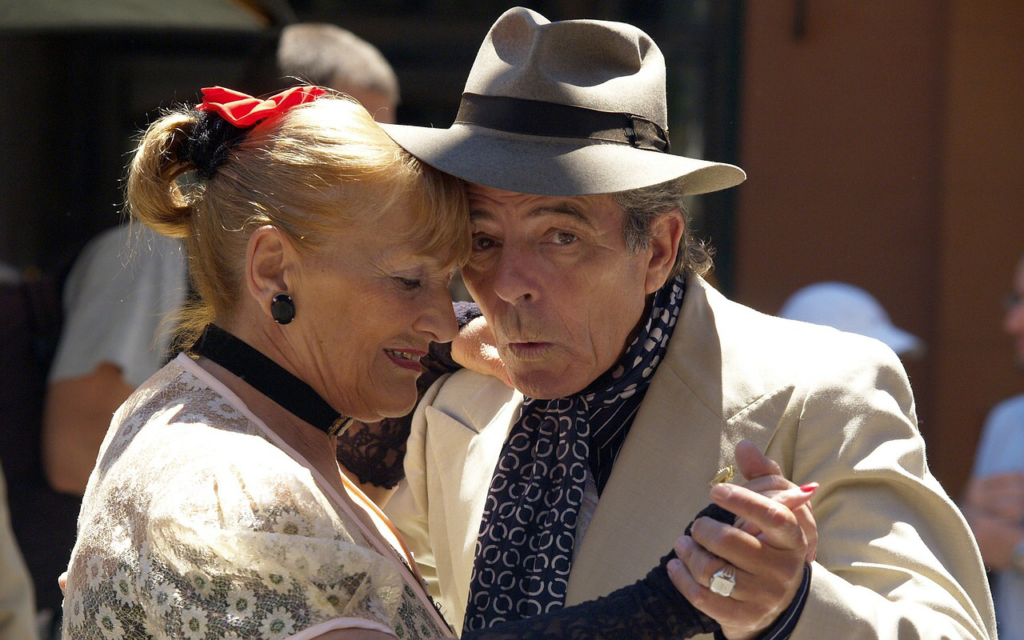Did you know that exercise is not only good for health but also good for inhibiting deterioration for as long as possible? The number of people suffering from Dementia worldwide is expected to grow strongly in the coming decades. Research has shown that exercise has positive effects on people with Dementia. How that works exactly and to what extent is still largely unknown and is therefore often investigated. Exercise is also an excellent way to get rid of stress and improve physical and mental health. It is thought that exercise stimulates the circulation of the brains and the production of new nerve cell connections.

Acceptance and understanding
First things first. The acceptance and understanding of the disease and the disease process help enormously. This way we can make a distinction between what the behavior of the person with Dementia is due to the disease and what comes from the person himself.
I often hear that the person with Dementia has to accept the disease. But it is also about having close family members accept the disease and learn to cope with it. The person with Dementia itself will only deteriorate over time and have no awareness of the disease itself.
Moving links
Providing warm care** can be offered from the beginning to the end of the disease process. Exercise fits perfectly in the warm care. With exercise, you make an entry to discuss difficult subjects with your loved one or patient, as far as possible. Can you make the connection with your loved one with or without words?

When a person with Dementia feels heard and understood, he or she can handle the constantly new situation better. We can delay the disease process but not stop it. Call in help on time and do not keep muddling yourself.
With agitation (calling, anxiety attacks, anger, and restlessness), movement is a good way to create peace. Moving is also a good way to get in touch with the person with Dementia in an advanced stage. Exercise is also a means for you to experience pleasure and peace in the care of someone with Dementia.
The most difficult thing for many family members, and sometimes also for us as professionals, is that the person with Dementia is constantly changing.
The course of the disease is not predictable for all types of Dementia and occasionally there is even a combination of the types (for example Alzheimer’s and Vascular Dementia). Knowledge of the various types of Dementia and what stage a person is is a huge help. Caring for people with Dementia requires a lot of patience.

What can you do?
For starters, it is important that you make moving around is easy for your loved one:
- Remove obstacles such as thresholds and long-pile carpets so that they cannot stumble. Investigate what can hinder his or her mobility.
- Does he or she suffer from arthritis, asthma, ingrown nails or calluses?
- Can he or she hear and see well? Does he or she suffer from constipation?
- Place (extra) handles along the stairs, on the toilet, and in the shower. A stair lift can offer a solution.
- Consider a walking stick or walker for your family member if he or she can get back into the house with it.
- You can also place a row of seats next to each other so that he or she can hold onto the backrests.
- Support your loved one so that you both look in the same direction and walk at her pace beside her.
- Walk with a goal in mind, for example to the dining table, and ensure that he or she can lean on something on the way.
- If they shuffle, see if it helps to walk at a rhythm. Turn on a piece of music with a pleasant walking rhythm.
- Turn the small pieces into a fun happening. Talk to him or her and give a lot of attention, that stimulates enormously.

What not to do?
- Do not pull on him or her.
- Do not walk with him or her if they tend to lean back. The chance of falling is high. Consult with a (geriatrics) physiotherapist about what you can do.
- If he or she is tired, do not force walking. Wait for a better moment.
Most known stages of Dementia
Below I describe most of the known phases of Dementia and how you can generally recognize that in the person with Dementia. Try to gauge the phase in which the person with Dementia is and use the corresponding exercise. Of course, you can also make a combination of different exercises. You know your loved one best, the choices below are a guide.

Phase 1: The threatened me
- The person knows that he forgets a lot.
- Things don’t go as well for him or her as before.
- The person lives in the here and now.
- The person is uncertain.
- Mood swings.
Suitable for phase 1
Stepping
Have the person walk up and down the first step of the stairs (in an apartment; the stairwell). Start with the right leg first and then start with the left leg. Have the person do 10 repetitions for each side (increase the repetitions to 12, 14, 16, etc. if the person can).

Press on the wall
Have the person push up against the wall. First, start with 3 times 15 repetitions and as the person can keep this up longer, let him or her stand farther from the wall.

Phase 2: The lost me
- The person lives more in the past.
- Feelings are more in the foreground (fear, panic, sadness, etc).
- Lost, the person usually does not know where he or she is.
Suitable for phase 2
Squats
Place a chair and let the person pretend to sit on the chair and then get up again. If that fails, let him sit and then get up again. Try this for 5 repetitions, if the person persists well let the person do 3 times 5 repetitions with a break of about 2 minutes.
Lift legs
Have the person stand behind a chair and have him hold the backrest. First let the person raise his right leg sideways for about 12 reps and then his left leg, also 12 reps. If the person maintains this well, have him do 3 times 12 reps on each side.

Phase 3: The hidden me
- The person withdraws to his inner world.
- Difficulty with making contact.
- Unfocused eyes.
- Physical limitations.
Suitable for phase 3
Dancing
Dancing together to the music that the person likes. Sing along with the person if you know the song.

Stumble
Stand together with the person at the table and invite him to join you at the table. Play with the pace and intensity. The person will follow you. Pay attention to the facial expression of the person, stop when you see that he or she is getting tired.
Phase 4: The sunken me
- Hardly any verbal communication possible.
- Often bedridden.
- Sleeps a lot.
- Focused on food, drink, sleep, and warmth.
Suitable for phase 4
Move to music
Put a specific number that person likes. Not a genre, not a category, not even a piece of music from around a certain time. If necessary, talk to family to find out which number you can use.

Massage
Massage the person’s hands with his or her favorite lotion. Note whether the person likes this. Before you go for a massage, invite the person first by extending your hands and see if the person gives a hand to you on their own. If the person withdraws his or her hand during the massage, leave them alone.
If you have always been physically active, it is best to continue this for as long as this is possible for you.

Do you want to know more about exercises tailored to people with Dementia or need help? Send a message and we will help you. Fill in our contact form, Facebook page, Instagram or Twitter. An introductory and intake interview are always free! The conversations can take place both live and via Skype.
